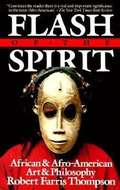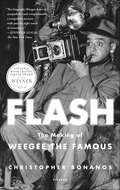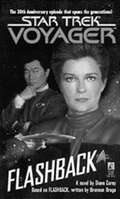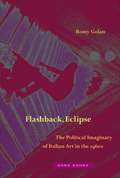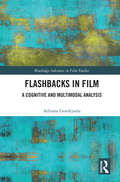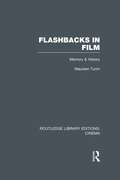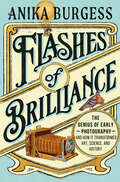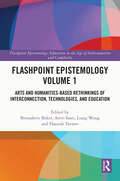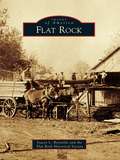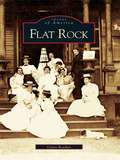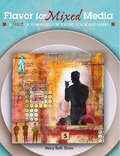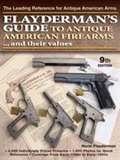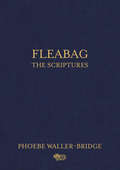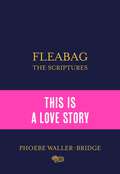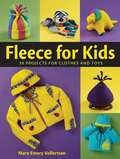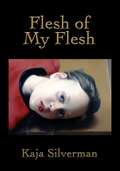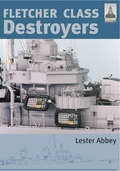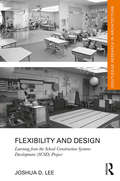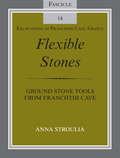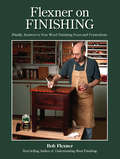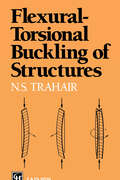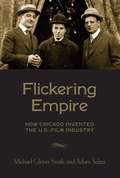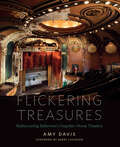- Table View
- List View
Flash of the Spirit: African and Afro-American Art and Philosophy
by Robert Farris ThompsonThis book reveals how five distinct African civilizations have shaped the specific cultures of their New World descendants.
Flash: The Making of Weegee the Famous
by Christopher BonanosWinner of the National Book Critics Circle AwardThe first comprehensive biography of Weegee—photographer, “psychic,” ultimate New Yorker—from Christopher Bonanos, author of Instant: The Story of Polaroid.Arthur Fellig’s ability to arrive at a crime scene just as the cops did was so uncanny that he renamed himself “Weegee,” claiming that he functioned as a human Ouija board. Weegee documented better than any other photographer the crime, grit, and complex humanity of midcentury New York City. In Flash, we get a portrait not only of the man (both flawed and deeply talented, with generous appetites for publicity, women, and hot pastrami) but also of the fascinating time and place that he occupied.From self-taught immigrant kid to newshound to art-world darling to latter-day caricature—moving from the dangerous streets of New York City to the celebrity culture of Los Angeles and then to Europe for a quixotic late phase of experimental photography and filmmaking—Weegee lived a life just as worthy of documentation as the scenes he captured. With Flash, we have an unprecedented and ultimately moving view of the man now regarded as an innovator and a pioneer, an artist as well as a newsman, whose photographs are among most powerful images of urban existence ever made.
Flashback (Star Trek)
by Diane CareyA hundred years before the Starship VoyagerTM was transported to the Delta Quadrant, Lieutenant Tuvok served under one of Starfleet's most famous officers: Captain Hikaru Sulu of the Starship ExcelsiorTM. Now those days have come back to haunt him. While traveling through an uncharted nebula, Tuvok is besieged by recurring memories of his time with Captain Sulu -- repressed memories that may well kill him unless their source is determined in time. To save her closest friend, Captain Kathryn Janeway follows Tuvok to the century-old bridge of the Excelsior during a desperate battle. There Tuvok, Captain Janeway, Captain Sulu and Commander Janice Rand must face a menace to galactic life unlike anything known before. . . .
Flashback, Eclipse: The Political Imaginary of Italian Art in the 1960s
by Romy GolanFrom a leading art historian, a provocative exploration of the intersection of art, politics, and historical memory in 1960s Italy.Flashback, Eclipse is a groundbreaking study of 1960s Italian art and its troubled but also resourceful relation to the history and politics of the first part of the twentieth century and the aftermath of World War II. Most analyses have treated the 1960s in Italy as the decade of “presentism” par excellence, a political decade but one liberated from history. Romy Golan, however, makes the counterargument that 1960s Italian artists did not forget Italian and European history but rather reimagined it in oblique form. Her book identifies and explores this imaginary through two forms of nonlinear and decidedly nonpresentist forms of temporality—the flashback and the eclipse. In view of the photographic and filmic nature of these two concepts, the book’s analysis is largely mediated by black-and-white images culled from art, design, and architecture magazines, photo books, film stills, and exhibition documentation.The book begins in Turin with Michelangelo Pistoletto’s Mirror Paintings; moves on to Campo urbano, a one-day event in the city of Como; and ends with the Vitalità del Negativo exhibition in Rome. What is being recalled and at other moments occluded are not only episodes of Italian nationalism and Fascism but also various liberatory moments of political and cultural resistance. The book’s main protagonists are, in order of appearance, artists Michelangelo Pistoletto and Giosetta Fioroni, photographer Ugo Mulas, Ettore Sottsass (as critic rather than designer), graphic designer Bruno Munari, curators Luciano Caramel and Achille Bonito Oliva, architect Piero Sartogo, Carla Lonzi (as artist as much as critic), filmmakers Michelangelo Antonioni and Bernardo Bertolucci, and, in flashback among the departed, painter Felice Casorati, writer Massimo Bontempelli, art historian Aby Warburg, architect Giuseppe Terragni, and Renaissance friar-philosopher-mathematician Giordano Bruno (as patron saint of the sixty-eighters).
Flashbacks in Film: A Cognitive and Multimodal Analysis (Routledge Advances in Film Studies)
by Adriana GordejuelaFlashbacks in Film examines fi lm fl ashback as a rich multimodal narrative device, analyzing the cognitive underpinnings of fi lm fl ashbacks and the mechanisms that lead viewers to successfully comprehend them. Combining a cognitive fi lm theory approach with the theoretical framework proposed by blending theory, which claims that human beings’ general ability for conceptual integration underlies most of our daily activities, this book argues that fl ashbacks make sense to the viewer, as they are specifi cally designed for the viewer’s cognitive understanding. Through a mixture of analysis and dozens of case studies, this book demonstrates that successful fi lm fl ashbacks appeal to the spectator’s natural perceptual and cognitive abilities, which spectators exercise daily. This book will serve as a valuable resource for scholars interested in film studies, media studies, and cognitive linguistics.
Flashbacks in Film: Memory & History (Routledge Library Editions: Cinema)
by Maureen TurimThe flashback is a crucial moment in a film narrative, one that captures the cinematic expression of memory, and history. This author’s wide-ranging account of this single device reveals it to be an important way of creating cinematic meaning. Taking as her subject all of film history, the author traces out the history of the flashback, illuminating that history through structuralist narrative theory, psychoanalytic theories of subjectivity, and theories of ideology. From the American silent film era and the European and Japanese avant-garde of the twenties, from film noir and the psychological melodrama of the forties and fifties to 1980s art and Third World cinema, the flashback has interrogated time and memory, making it a nexus for ideology, representations of the psyche, and shifting cultural attitudes.
Flashes of Brilliance: The Genius of Early Photography and How It Transformed Art, Science, and History
by Anika BurgessThe story of the wildest experiments in early photography and the wild people who undertook them. Today it’s routine to take photos from an airplane window, use a camera underwater, or watch a movie or view an X-ray. But the photographic innovations more than a century ago that made such things possible were experimental, revelatory, and sometimes dangerous—and many of the innovators, entrepreneurs, and inventors behind them were memorable eccentrics. In Flashes of Brilliance, New York Times photo editor Anika Burgess engagingly blends art, science, and social history to reveal the most dramatic developments in photography from its birth in the 1830s to the early twentieth century. Writing with verve and and an eye for the compelling detail, Burgess explores how photographers uncovered new vistas, including dark caves and catacombs, cities at night, the depths of the ocean, and the surface of the moon. She describes how photographers captured the world as never seen before, showing for the first time the bones of humans, the motion of animals, the cells of plants, and the structure of snowflakes. She takes us on a tour of astonishing innovations, including botanist Anna Atkins and her extraordinary blue-hued cyanotypes and the world’s first photobook; Eadweard Muybridge and Étienne-Jules Marey’s famed experiments in capturing motion and their long legacy; the work of Nadar, Carleton E. Watkins, and other leading pioneers of large-scale photography; and aerial photography using balloons, kites, and pigeons. Burgess also delves into the early connections between photography and society that are still with us today: how photo manipulation—the art of “fake images”—was an issue right from the start; how the police used the telephoto lens to surveil suffragists and others; and how leading Black figures like Sojourner Truth and Frederick Douglass adapted self-portraits to assert their identity and autonomy. Richly illustrated and filled with fascinating tales, Flashes of Brilliance shows how the rise of a new art form transformed culture and our view of the world.
Flashpoint Epistemology Volume 1: Arts and Humanities-Based Rethinkings of Interconnection, Technologies, and Education (Flashpoint Epistemology)
by Liang Wang Bernadette Baker Antti Saari Hannah TavaresThe 21st century is steeped in claims to interconnection, technological innovation, and new affective intensities amid challenges to the primacy and centrality of "the human". Flashpoint epistemology attends to the lived difficulties that arise in teaching, policymaking, curriculum, and research among continuous practices of differentiation, and for which there is no pre-existing template for judgment, resolution, or action. Flashpoint Epistemology Volume 1 examines contemporary collisions and reworkings of cultural-political issues in education through arts and humanities-based approaches. How and whether lines are (re)drawn in educational practice – and via who-what – between justice, morality, religion, ethics, subjectivities, intersectionality, the sublime, and the senses are a particular focus. The volume offers innovative relational approaches and new narrativization strategies, examining the aporia experienced when operating in educational domains of inevitable, recurring, difficult, fortuitous, and/or unforeseen flashpoints. The chapters will engage researchers seeking new approaches to education’s complexities, nested discourses, and ever-moving horizons of enactment. It will also benefit post/graduate students and teachers whose work intersects with sociological, philosophical, and cultural studies and who are curious about claims to interconnection, the ethical quandaries embedded in practice, and the affordances and limits of technological innovation.
Flat Rock
by Stacey Reynolds Flat Rock Historical SocietyLocated between Monroe and Detroit in Michigan, Flat Rock's history begins with the Wyandot, Huron, and Seneca Indians who once hunted and fished along the Huron River. Founded in 1823 by Michael Vreelandt, the area started to grow and prosper when settlers discovered the fertile lands and waterpower of the Huron River. The power of the river attracted settlers to build and operate two sawmills, a flour mill, and a blacksmith shop. When Pres. Abraham Lincoln called for volunteers to join the Civil War, many men from Flat Rock enlisted under Walter H. Wallace's encouragement. The largest number of volunteers came from Michigan, and that state suffered the largest number of wounded at the Battle of Gettysburg. Discover the town's story through these archival images from the Flat Rock Historical Society, showcasing the businesses, churches, community, and people whose hard work helped the city to prosper.
Flat Rock
by Galen ReutherNamed for the great expanse of rock where the Cherokee Indians used to spend their summers, Flat Rock, North Carolina, is beautifully situated near the Continental Divide in the Blue Ridge Mountains. Flat Rock is known as "the Little Charleston of the Mountains," thanks to the pioneering Lowcountry settlers who flocked to the area after the Revolutionary War. These prominent South Carolina families, drawn to the refreshing cool mountain air that offered relief from the steamy Charleston summers, purchased vast quantities of land and built grand estates for their residences or summer getaways. The photographs in Images of America: Flat Rock illustrate the gorgeous homes and attractions of this National Historic Site, including the Flat Rock Playhouse and St. John in the Wilderness Church, the oldest Episcopal Church in western North Carolina.
Flavor for Mixed Media: A Feast of Techniques for Texture, Color and Layers
by Tonia Davenport Mary Beth ShawIt's time to cook up some creativity! You're invited to a fanciful feast of color, textures and luscious layers that will tempt even the most discriminating painter's palette. Whether you love experimenting with your own flavors, or following a recipe to a 'T,' Flavor of Mixed Media will be your guide to handcrafting some of your most delectable works of art yet! Artist Mary Beth Shaw will share her mixed media painting techniques for working with color, incorporating many different textures, creating multiple layers, developing a distinct flavor and making all sorts of clever combinations. In addition to home-style favorite such as collage tips and tricks, and inspiring works by "dinner guest" artists, other things you'll sample from this menu include: How to experiment with color mixing and develop your own tasty triads Achieving texture with unusual tools such as a cheese grater or stencils or "icing" Clever new ways to use what's already in your art-making pantry Creating depth to your work with cutout shapes or Plexiglas Doodling bookmaking, collagraph printing, actual food recipes and more! Clear off the counter and get cooking! Let Flavor for Mixed Media tempt your "palette" today.
Flaxman's Illustrations for Dante's Divine Comedy
by John FlaxmanSince its creation at the beginning of the fourteenth century, Dante's Divine Comedy--a masterpiece of European literature--has moved legendary artists such as William Blake and Gustave Doré to illustrate the famed poem. John Flaxman, English sculptor, draughtsman, and renowned Wedgwood designer, was no exception. Commissioned at the end of the eighteenth century by famed art collector and author Thomas Hope, Flaxman's 110 illustrations of the Divine Comedy are known as his greatest achievement. Deceptively simple, awash in pathos, and recalling antique imagery in a classically Greek style, they themselves became an inspiration for such artists as Goya and Ingres, and were used as an academic source for nineteenth-century art students. This magnificent edition of Flaxman's Illustrations for Dante's Divine Comedy includes the complete series of drawings created by Flaxman for all 99 cantos of the literary masterwork. A glorious collection of lively outlines that captures the very spirit of Dante's poem, it is an essential addition to the bookshelves of art, literature, and history enthusiasts. Captions are included from the Henry Wadsworth Longfellow translation of the original text.
Flayderman's Guide to Antique American Firearms and Their Values: The Leading Reference for Antique American Arms (9th edition)
by Norm FlaydermanWith meticulously researched data, and descriptions of stampings and markings for more than 4,000 antique American firearms, Flayderman's work is truly the ultimate value guide.
Fleabag: The Scriptures
by Phoebe Waller-BridgeGo deeper into the groundbreaking, Emmy-winning series with this must-have collection—&“a completist&’s dream of a book, including the show&’s full scripts and Waller-Bridge&’s commentary&” (Vogue). &“Her coat falls open. She only has her bra on underneath. She pulls out the little sculpture of the woman with no arms. It sits on her lap. Two women. One real. One not. Both with their innate femininity out.&” Phoebe Waller-Bridge&’s critically acclaimed, utterly unique series Fleabag took the world by storm with its piercing dialogue, ruthlessly dry wit, and deeply human drama. In Fleabag: The Scriptures, Waller-Bridge brings together for the first time the complete filming scripts of the first and second seasons, annotated with never-before-seen stage directions and exclusive commentary on her creative process and the making of the series. Now recognized as one of today&’s most essential voices, she delivers powerful insights into her now-iconic protagonist: the hilarious, emotionally damaged, sexually unapologetic woman who can make viewers laugh, cry, and cringe in a single scene. Essential for any fan, Fleabag: The Scriptures is the ultimate companion to a landmark series.
Fleabag: The Sunday Times Bestseller (Nhb Modern Plays Ser.)
by Phoebe Waller-BridgeBestseller in the UK, Sunday Times, November 2019.The complete Fleabag. Every Word. Every Side-eye. Every Fox.Fleabag: The Scriptures includes new writing from Phoebe Waller-Bridge alongside the filming scripts and the never-before-seen stage directions from the Golden Globe, Emmy and BAFTA winning series. 'Perfect' Guardian'Perfect' Daily Telegraph'Perfect' Stylist 'Perfect' Independent'Perfect' Evening Standard 'Perfect' Metro'Perfect' Irish Times 'Perfect' RTE'Perfect' Spectator'Perfect' Refinery29'Perfect' Catholic Herald'Perfection' Financial Times***HAIRDRESSERNO.(pointing to Claire)That is EXACTLY what she asked for.FLEABAGNo it's not. We want compensation.HAIRDRESSERClaire?CLAIREI've got two important meetings and I look like a pencil.HAIRDRESSERNO. Don't blame me for your bad choices. Hair isn't everything.FLEABAGWow.HAIRDRESSERWhat?FLEABAGHair. Is. Everything. We wish it wasn't so we could actually think about something else occasionally. But it is. It's the difference between a good day and a bad day. We're meant to think that it is a symbol of power, a symbol of fertility, some people are exploited for it and it pays your fucking bills. Hair is everything, Anthony.
Fleece for Kids
by Mary Emery VollertsenFun, fuzzy and fleece! High-style fleece clothing and toys are affordable and easy with author Mary Vollertsen's step-by-step instructions. Boutique-style clothing will keep your children warm and have your friends talking. By adjusting basic patterns and embellishing with smoking, painting ribbons or applique, you can make a jacket, pullover or hat to fit any personality. Even create toys with simple, step-by-step soft-sculpture techniques. From smoked balls to a baby dinosaur, these toys make great playmates and great gifts.
Flesh of My Flesh
by Kaja SilvermanSilverman (rhetoric and film studies, University of California, Berkeley) argues for a return to analogy, of seeing ourselves as part of a whole. She sees life as a conflict between the desire for unity and the need to be unique. While drawing from a number of sources, including Freud, Rilke, Proust, Leonardo Da Vinci and Nietzsche, her primal metaphors are from Ovid's Metamorphosis, especially the story of Orpheus and Eurydice. In the first half of the book, she concentrates on nineteenth century redactions of the myth. The ways in which artists and philosophers tackled the dichotomy is shown as entwined with a sense of selfhood but also a sense of mortality. In the second half, Silverman uses the examples of Malick's film The Thin Red Line, the "intervention" created by James Coleman for a 2002 Leonardo exhibit at the Louvre and, lastly, the photographs/paintings of Gerhardt Richter which include images and distortions of death. The book is illustrated throughout, along with a group of colored plates. Annotation c2010 Book News, Inc. , Portland, OR (booknews. com)
Fletcher Class Destroyers (Shipcraft Ser.)
by Lester AbbeyThe 'ShipCraft' series provides in-depth information about building and modifying model kits of famous warship types. Lavishly illustrated, each book takes the modeller through a brief history of the subject class, using scale plans to highlight differences between sisterships and changes in their appearance over their careers, then moves to an extensive photographic survey of either a high-quality model or a surviving example of the ship. Hints on building the model, and on modifying and improving the basic kit, are followed by a section on paint schemes and camouflage, featuring numerous colour profiles and highly-detailed line drawings. The strengths and weaknesses of available kits of the ships are reviewed, and the book concludes with a section on research references—books, monographs, large-scale plans and relevant websites. The subject of this volume is the Fletcher class, often considered the most successful of all American destroyers. Built to the first design that was freed from treaty restrictions, they came into service near the beginning of the Pacific War and fought with distinction through all the most ferocious of the campaigns against Japan. They were constructed in large numbers, with a number of variations, and their popularity is reflected by the wide range of available kits.
Flexibility and Design: Learning from the School Construction Systems Development (SCSD) Project (Routledge Research in Architecture)
by Joshua D. LeeThis book questions flexibility as a design approach by providing a longitudinal analysis of an innovative architectural experiment called the School Construction Systems Development (SCSD) project. The SCSD pioneered the use of performance specifications to create an open, prefabricated, and integrated system of building components that provided four modes of flexibility. Educational facilities throughout California used the SCSD system and it spawned a variety of similar projects throughout North America. This book traces the development and subsequent use of the system over 50 years through archival research, personal observations, re-photography, re-surveying, plan evaluations, interviews, and an advertisement analysis. These new findings provide useful insights for architects, educators, historic preservationists, and others about the affordances of spatial flexibility, the difficulties associated with technological transfer, the impact of unstable market conditions, the importance of user input during the planning process, and the need for long-term social relations to sustain architectural experiments.
Flexible Stones: Ground Stone Tools from Franchthi Cave, Fascicle 14, Excavations at Franchthi Cave, Greece (Excavations at Franchthi Cave, Greece)
by Anna StrouliaDespite their ubiquitous presence among prehistoric remains in Greece, ground stone tools have yet to attract the same kind of attention as have other categories of archaeological material, such as pottery or lithics. Flexible Stones provides a detailed analysis of the material discovered during the excavations at Franchthi Cave, Peloponnese, Greece. Approximately 500 tools, the raw material used for their manufacture, as well as the byproducts of such manufacture were found. Most of this collection comes from the Neolithic component of the site—including a small number of Palaeolithic and Mesolithic cases—with a large number of the studied tools indicating multiple uses. Anna Stroulia sees the multifunctional character of these tools as a conscious choice that reflects a flexible attitude of tool makers and users toward tools and raw materials. A CD-Rom with 209 additional plates is included.
Flexner on Finishing: Finally - Answers to Your Wood Finishing Fears & Frustrations
by Bob FlexnerEverything You Need to Finish Your Woodworking Projects Like a Pro No more mystery. No more hype. Told as it is. Take control of finishing by learning how to use the many finishes available-and what those products actually are. In this book, his first since Understanding Wood Finishing, Bob Flexner delves deeper into many of the issues woodworkers struggle with and he does it with an authority that leaves no doubt. Inside, you'll discover the truth about: Wood Preparation Choosing a Finish Coloring Wood Brushing & Spraying Overcoming Finishing Problems Finishing Myths Repairing Finishes And So Much More! BONUS CHAPTER on Furniture Repair!
Flexural-Torsional Buckling of Structures
by Nick TrahairThis book provides an up-to-date and comprehensive treatment of flexural-torsional buckling, and shows how to design against this mode of failure. It also gives detailed summaries of knowledge on flexural-torsional buckling so that it can be used as a source book by practising engineers and designers, researchers and advanced students of structural
Flickering Empire: How Chicago Invented the U.S. Film Industry
by Adam Selzer Michael Glover SmithTells the fascinating but too little known story of how Chicago served as the unlikely capital of film production in America in the years prior to the rise of Hollywood (1907-1913)
Flickering Empire: How Chicago Invented the U.S. Film Industry
by Adam Selzer Michael Glover SmithFlickering Empire tells the fascinating yet little-known story of how Chicago served as the unlikely capital of American film production in the years before the rise of Hollywood (1907–1913). As entertaining as it is informative, Flickering Empire straddles the worlds of academic and popular nonfiction in its vivid illustration of the rise and fall of the major Chicago movie studios in the mid-silent era (principally Essanay and Selig Polyscope). Colorful, larger-than-life historical figures, including Thomas Edison, Charlie Chaplin, Oscar Micheaux, and Orson Welles, are major players in the narrative—in addition to important though forgotten industry titans, such as "Colonel" William Selig, George Spoor, and Gilbert "Broncho Billy" Anderson.
Flickering Treasures: Rediscovering Baltimore's Forgotten Movie Theaters
by Amy DavisThe riveting story of Baltimore’s movie theaters over the past century, eloquently told through extraordinary photographs and poignant reminiscences.2018 Winner of the Preservation Award of the Baltimore HeritageBaltimore has been home to hundreds of theaters since the first moving pictures flickered across muslin sheets. These monuments to popular culture, adorned with grandiose architectural flourishes, seemed an everlasting part of Baltimore’s landscape. By 1950, when the city’s population peaked, Baltimore’s movie fans could choose from among 119 theaters. But by 2016, the number of cinemas had dwindled to only three. Today, many of the city’s theaters are boarded up, even burned out, while others hang on with varying degrees of dignity as churches or stores. In Flickering Treasures, Amy Davis, an award-winning photojournalist for the Baltimore Sun, pairs vintage black-and-white images of opulent downtown movie palaces and modest neighborhood theaters with her own contemporary full-color photographs, inviting us to imagine Charm City’s past as we confront today’s neglected urban landscape. Punctuated by engaging stories and interviews with local moviegoers, theater owners, ushers, and cashiers, plus commentary from celebrated Baltimore filmmakers Barry Levinson and John Waters, the book brings each theater and decade vividly to life. From Electric Park, the Century, and the Hippodrome to the Royal, the Parkway, the Senator, and scores of other beloved venues, the book delves into Baltimore’s history, including its troubling legacy of racial segregation. The descriptions of the technological and cultural changes that have shaped both American cities and the business of movie exhibition will trigger affectionate memories for many readers. A map and timeline reveal the one-time presence of movie houses in every corner of the city, and fact boxes include the years of operation, address, architect, and seating capacity for each of the 72 theaters profiled, along with a brief description of each theater’s distinct character. Highlighting the emotional resonance of film and the loyalty of Baltimoreans to their neighborhoods, Flickering Treasures is a profound story of change, loss, and rebirth.
